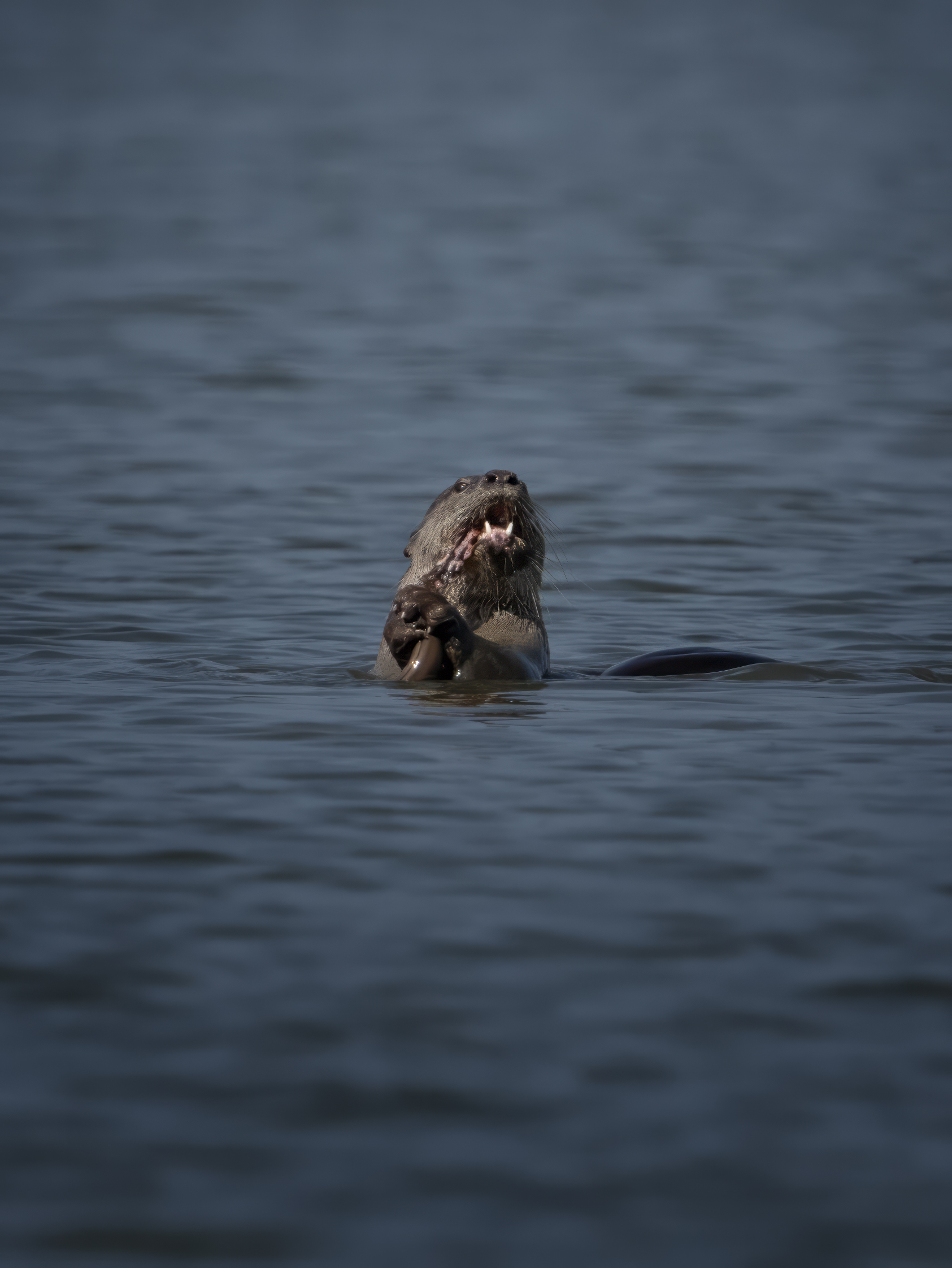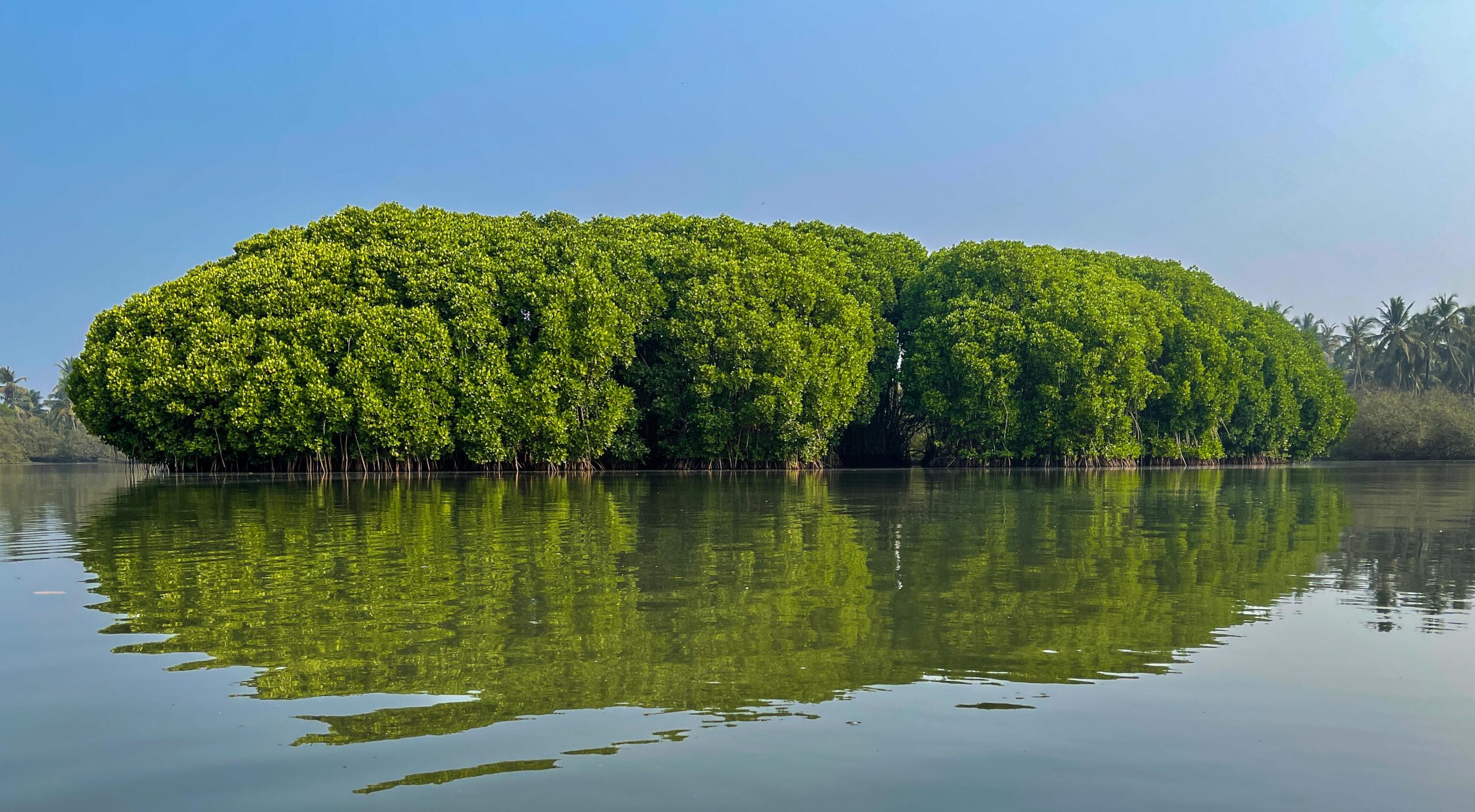It was a quiet morning on the Kadalundi River. As the boat glided gently through the tangled emerald corridors of the mangroves, I found myself immersed in the rhythmic calls of kingfishers and the occasional flutter of herons. These brackish backwaters are natural sanctuaries, an intricate web of life that shelters countless species, from crustaceans and birds to reptiles and mammals.
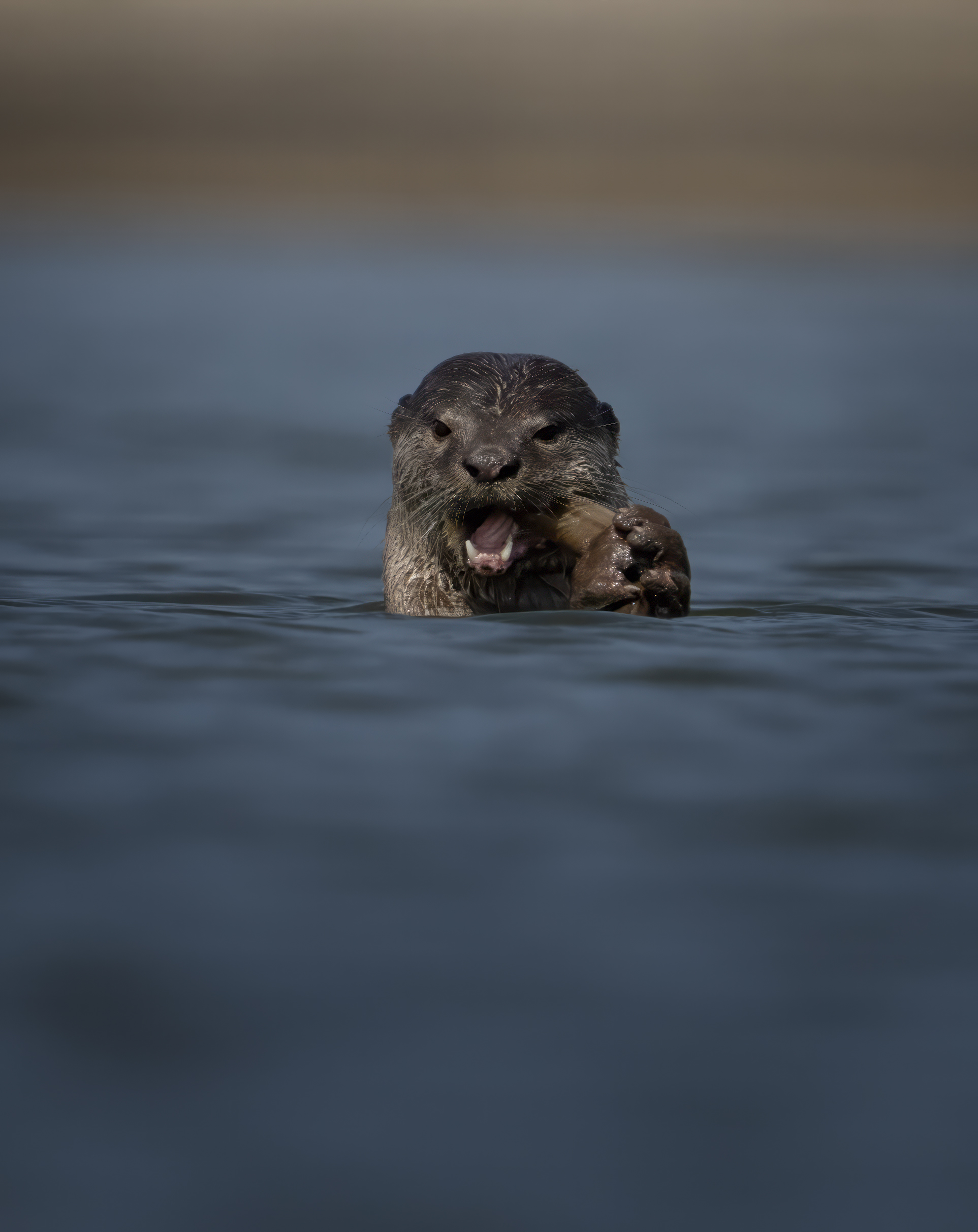
But nothing quite prepared me for what I was about to witness that day.
Amid the gnarled roots and mudflats, three slender shadows moved along the riverbank. At first, I mistook them for monitor lizards, but a flick of a whiskered snout and the sleek, smooth movement across the water revealed their identity, – river otters. It was a rare and intimate moment, the kind that makes you forget to reach for your camera.

The trio rested briefly, on river banks. They seemed alert yet at ease, occasionally glancing toward the water’s edge. Moments later, the calm was broken by a splash one of them had slipped into the water with purposeful grace. With swift, darting movements, it hunted beneath the surface. Within seconds, it emerged with a wriggling eel in its jaws.
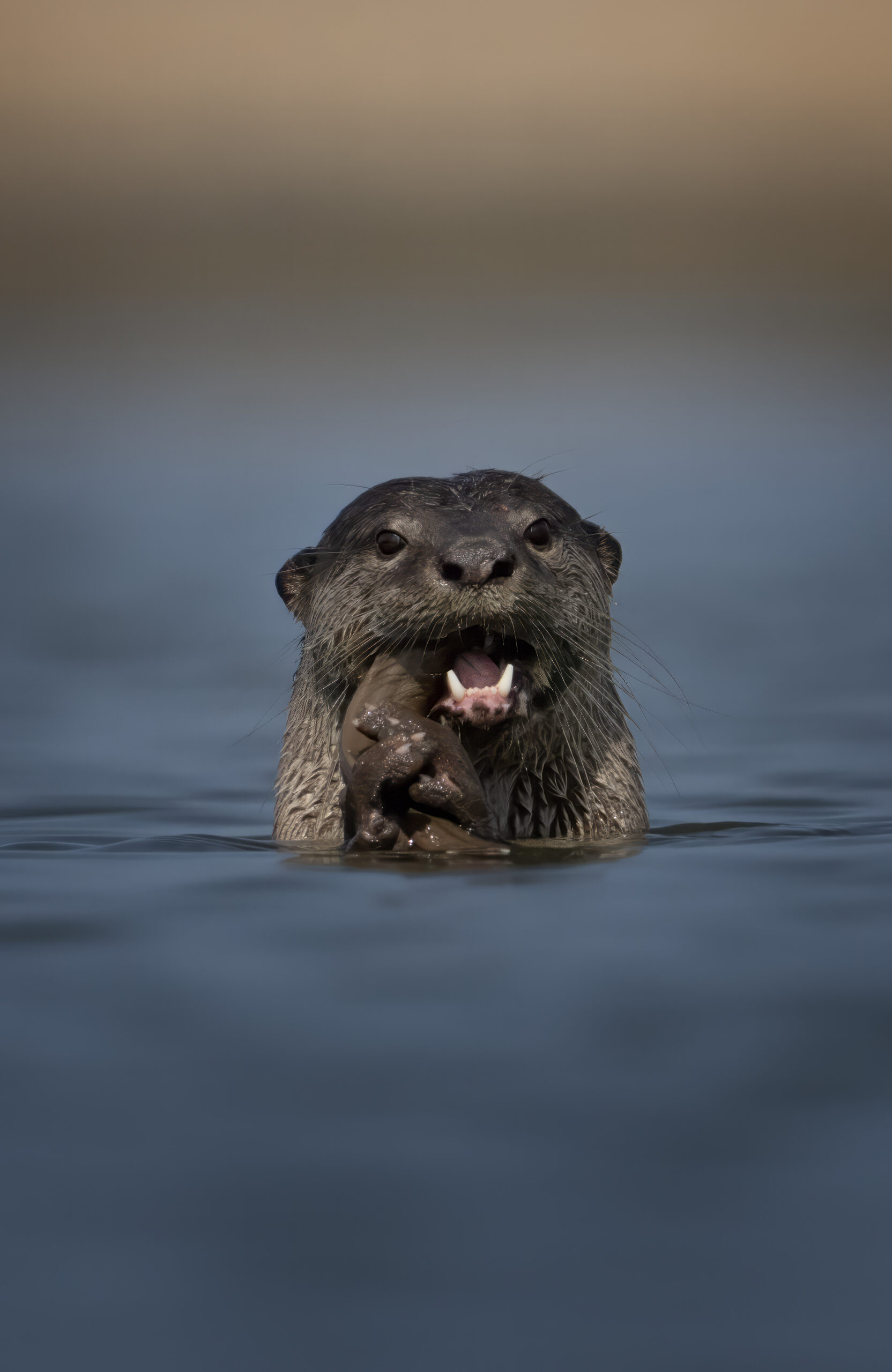
But this was no solitary feast. The catch became a shared prize. The otter, although reluctant at first, eventually yielded portions of the eel to its companions. There was a certain unspoken camaraderie, a natural code of sharing that left me in awe. It was a fleeting moment but etched forever in memory.
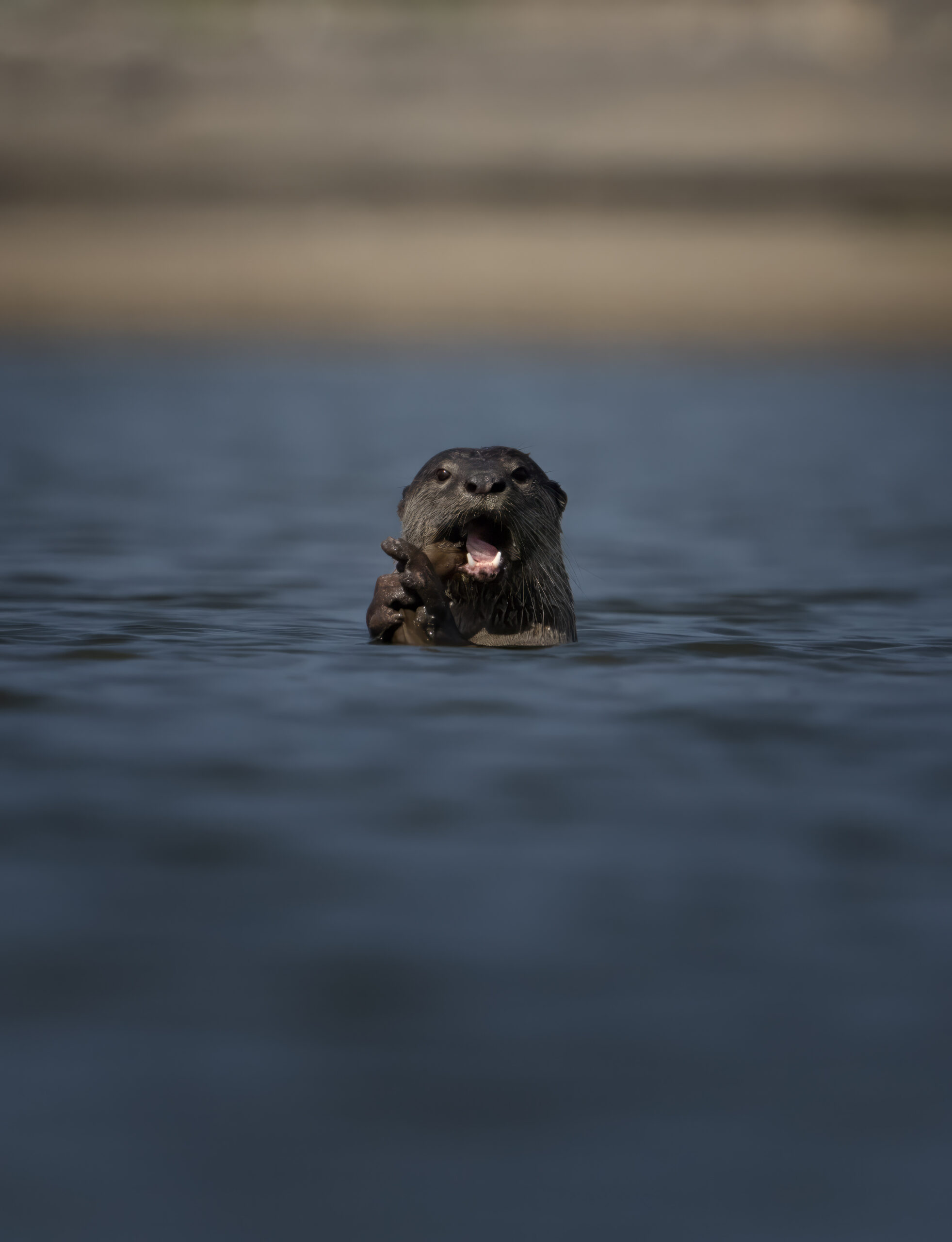
This encounter is more than just a personal thrill. It is a poignant reminder of the hidden worlds thriving within our fragile ecosystems. Mangroves, like those in Kadalundi, act as cradles of biodiversity. Their tangled roots serve as nurseries for fish, shields against coastal erosion, and buffers against climate change. Yet, these vital habitats are under constant threat from unchecked development, pollution, and habitat fragmentation. Mangroves are vital coastal ecosystems that offer immense ecological benefits. They support rich biodiversity by providing shelter and breeding grounds for numerous species, including birds, fish, reptiles, and mammals like otters. As highly efficient carbon sinks, mangroves capture and store large amounts of atmospheric carbon, helping combat climate change. Their dense root systems protect coastlines by reducing wave impact, preventing erosion, and buffering storm surges. Additionally, mangrove habitats serve as critical nurseries for many commercially important fish and crustaceans, sustaining local fisheries and livelihoods. Conserving mangroves is essential for maintaining coastal resilience and ecological balance.
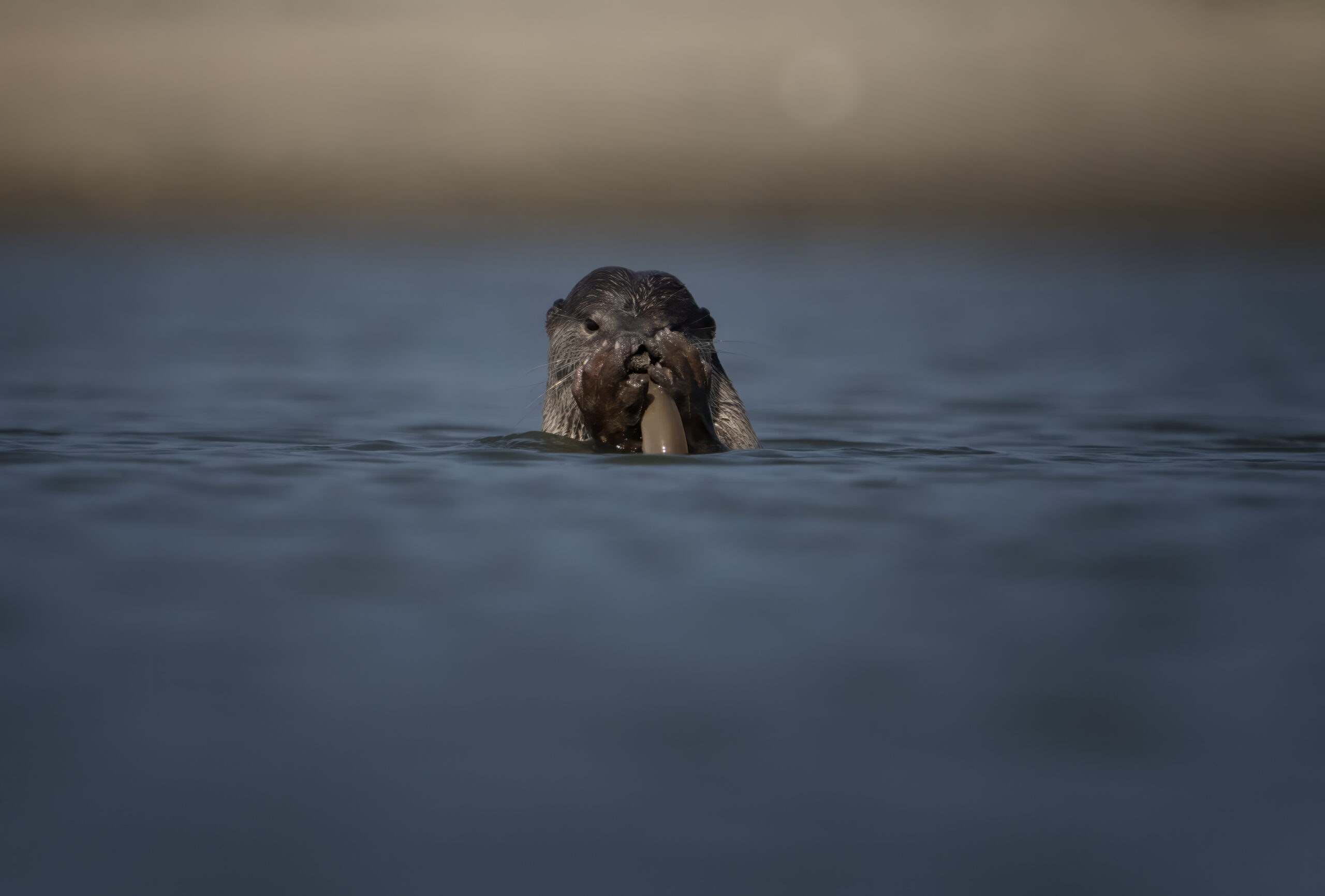
River otters, shy and elusive by nature, are excellent indicators of wetland health. Their presence signals a thriving aquatic ecosystem. But like the mangroves they inhabit, they are increasingly vulnerable to human disturbance, plastic pollution, and diminishing fish stocks. River otters are excellent bioindicators of freshwater and coastal ecosystem health. Their presence signifies clean water, abundant prey, and intact habitat, as they are highly sensitive to pollution, habitat degradation, and human disturbances. Since otters sit near the top of the aquatic food chain, a stable otter population reflects a well-functioning, balanced ecosystem. Declines in otter numbers often signal underlying environmental issues such as water contamination, reduced fish stocks, or ecosystem imbalance. Monitoring otter populations helps conservationists assess the overall health of wetland and riverine habitats.
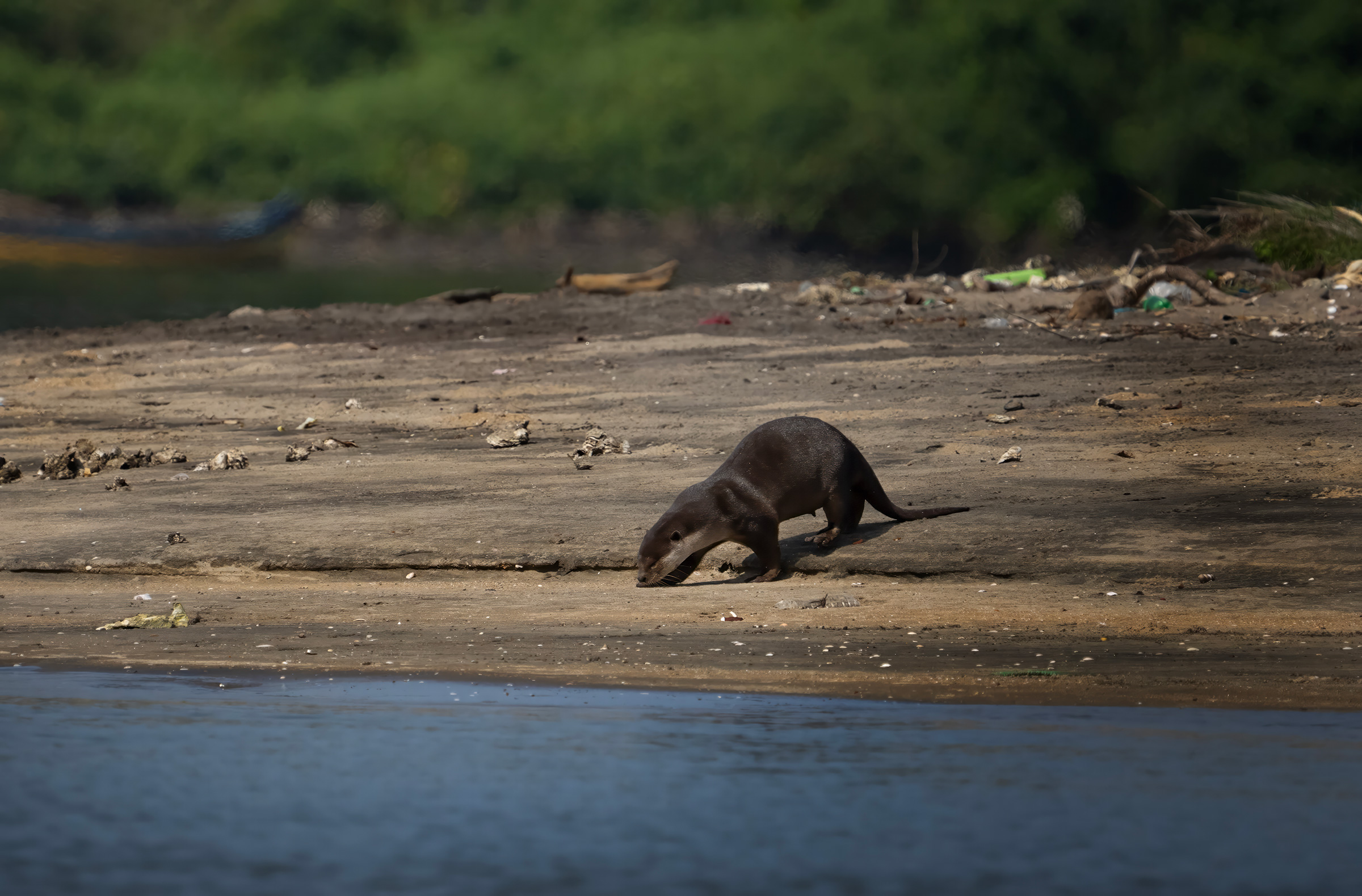
The Smooth-coated Otter (Lutrogale perspicillata) is the largest otter species in Asia, distinguished by its velvety fur, broad muzzle, and partially webbed paws. Unlike their solitary cousins, Smooth-coated Otters are highly social creatures, often seen in groups of three to ten individuals, known as rafts.
They are expert swimmers, capable of remaining submerged for over eight minutes while hunting. Their diet primarily consists of fish, but they also eat crabs, amphibians, and occasionally small birds or reptiles. They are known for their intelligence and coordination, especially during group hunts, a trait I witnessed firsthand.
Smooth-coated Otters are primarily found across the Indian subcontinent and Southeast Asia, frequenting wetlands, rivers, estuaries, and mangrove forests. However, despite their adaptability, their populations are declining across much of their range. As top predators in aquatic food chains, otters depend on stable environments free from pollution and excessive disturbance. A thriving otter population suggests a balanced and functioning ecosystem, while their absence may signal water contamination, habitat loss, or ecological degradation.
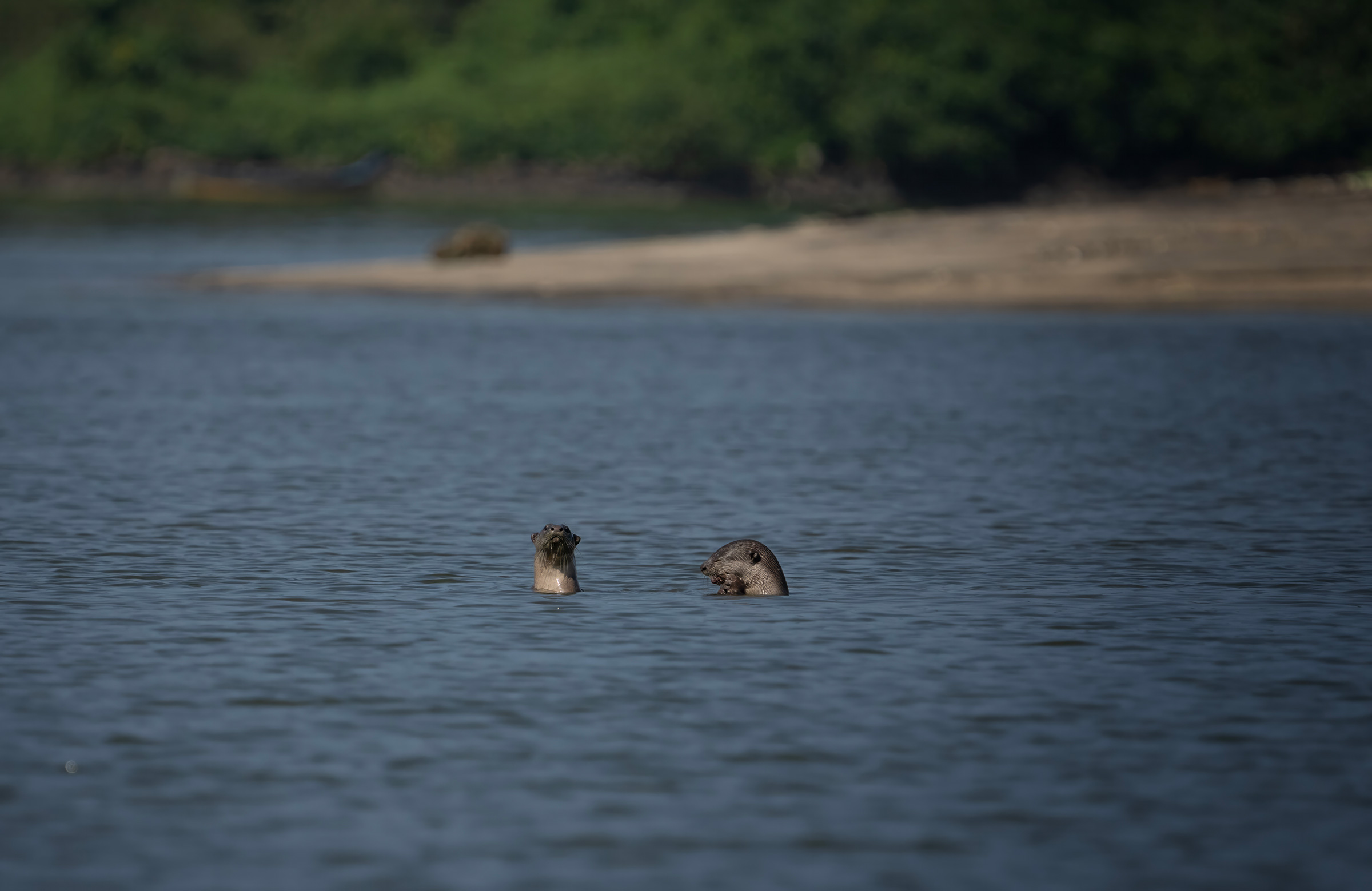
In India, these otters are listed as ‘Vulnerable’ on the IUCN Red List due to habitat loss, pollution, poaching, and depletion of fish stocks. They are also under threat from human-wildlife conflict, particularly in areas where they compete with fishermen or raid aquaculture farms.
Both mangroves and river otters face growing threats from human activity. Coastal development and land reclamation lead to habitat destruction and fragmentation. Pollution from agricultural runoff, sewage, and industrial waste degrades water quality, directly affecting otters and mangrove health. Mangroves are also cleared for aquaculture and infrastructure projects. Otters, meanwhile, often come into conflict with fisheries, where they are viewed as competitors for fish, sometimes leading to trapping or persecution. Protecting these ecosystems requires integrated conservation efforts and community awareness.
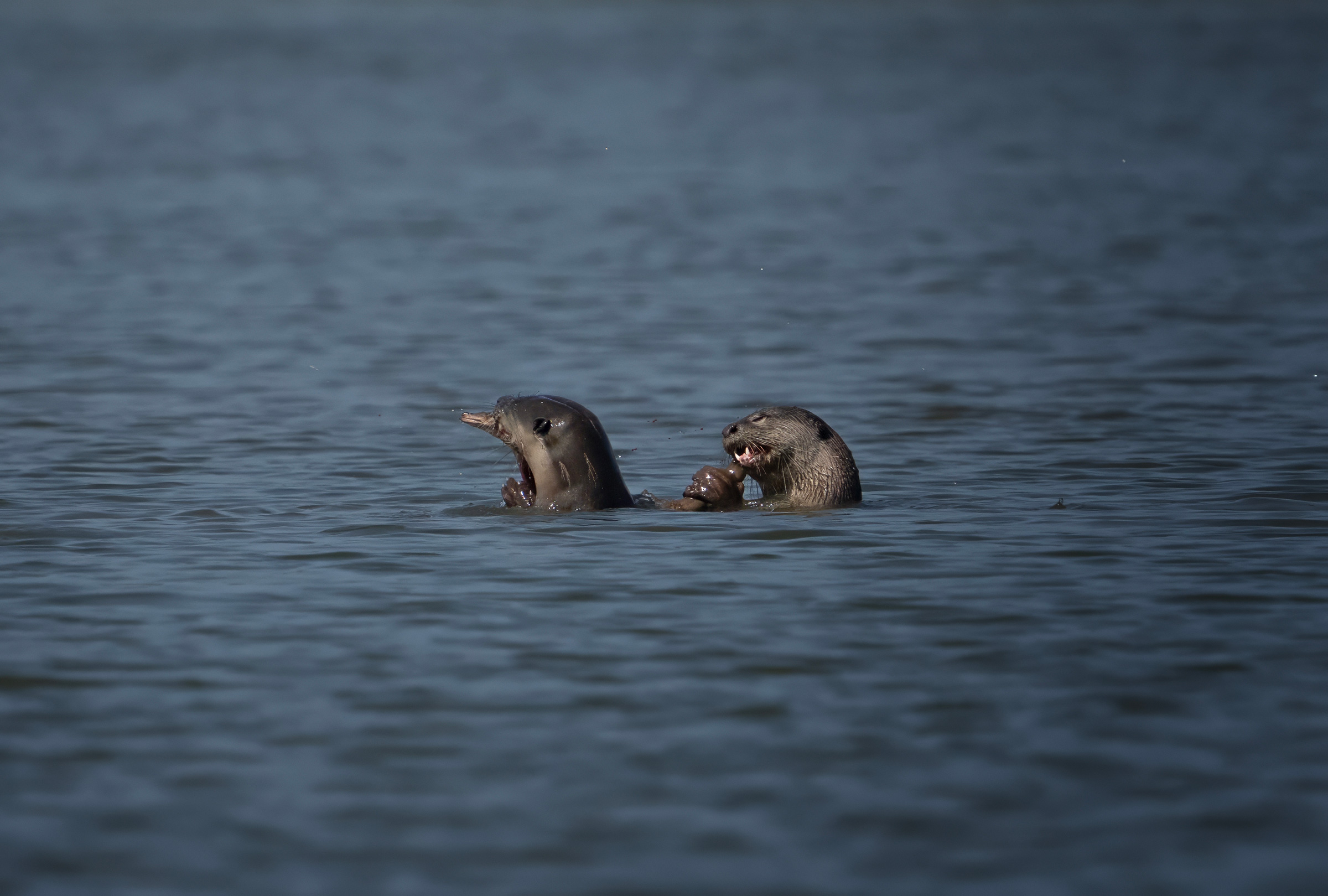
In Kerala and across South Asia, several initiatives focus on conserving mangroves and river otters through community participation and habitat restoration. In Kerala, the Kadalundi-Vallikkunnu Community Reserve is a model where local stakeholders actively protect mangrove ecosystems, promoting eco-tourism and awareness. The Mangrove Cell in Maharashtra and the Mangrove Foundation support similar community-driven conservation efforts, which can serve as replicable models for Kerala.
For otters, the Otter Conservation Programme promoted by Wildlife Institute of India (WII) and studies conducted by researchers in the Western Ghats and Kerala backwaters have increased awareness of smooth-coated otters and their ecological role. In areas like Thattekad and Kottayam, citizen science, nature education, and local surveys are helping document otter presence and push for better habitat protection. Such integrated approaches highlight the importance of involving local communities in safeguarding both mangroves and otters.
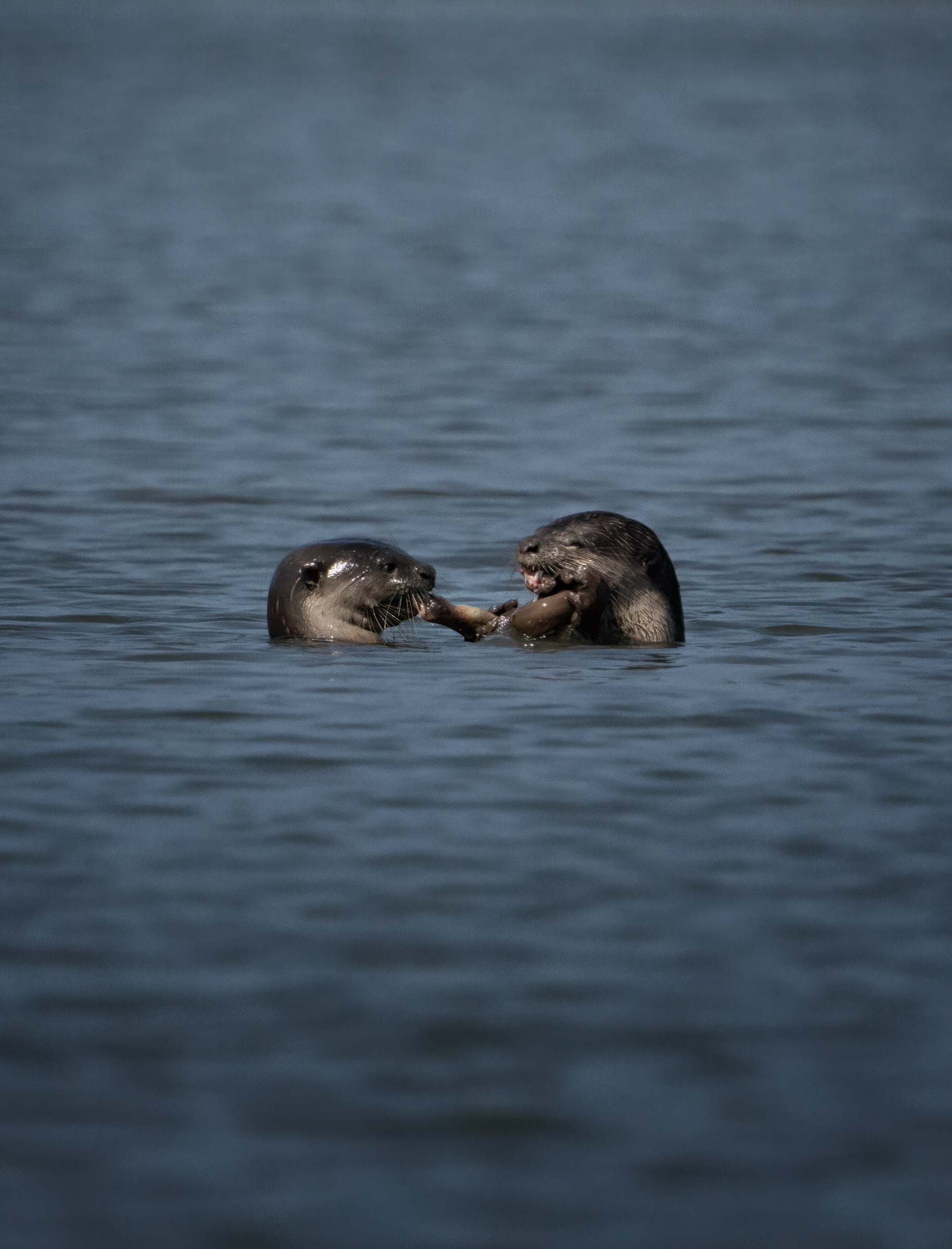
Protecting mangroves and river otters requires collective effort. Readers and nature lovers can contribute by spreading awareness, supporting responsible ecotourism, and avoiding products or practices that harm coastal ecosystems. Visiting eco-friendly destinations, like mangrove reserves, encourages conservation through tourism. Local communities can participate in habitat clean-ups, report wildlife sightings, and engage in sustainable fishing practices that reduce conflict with otters. Policymakers can strengthen protection laws, fund conservation research, and support community-led initiatives. By working together through education, engagement, and action we can ensure these vital ecosystems and their charismatic inhabitants thrive for generations to come.
To witness them is a gift but also a call to action.
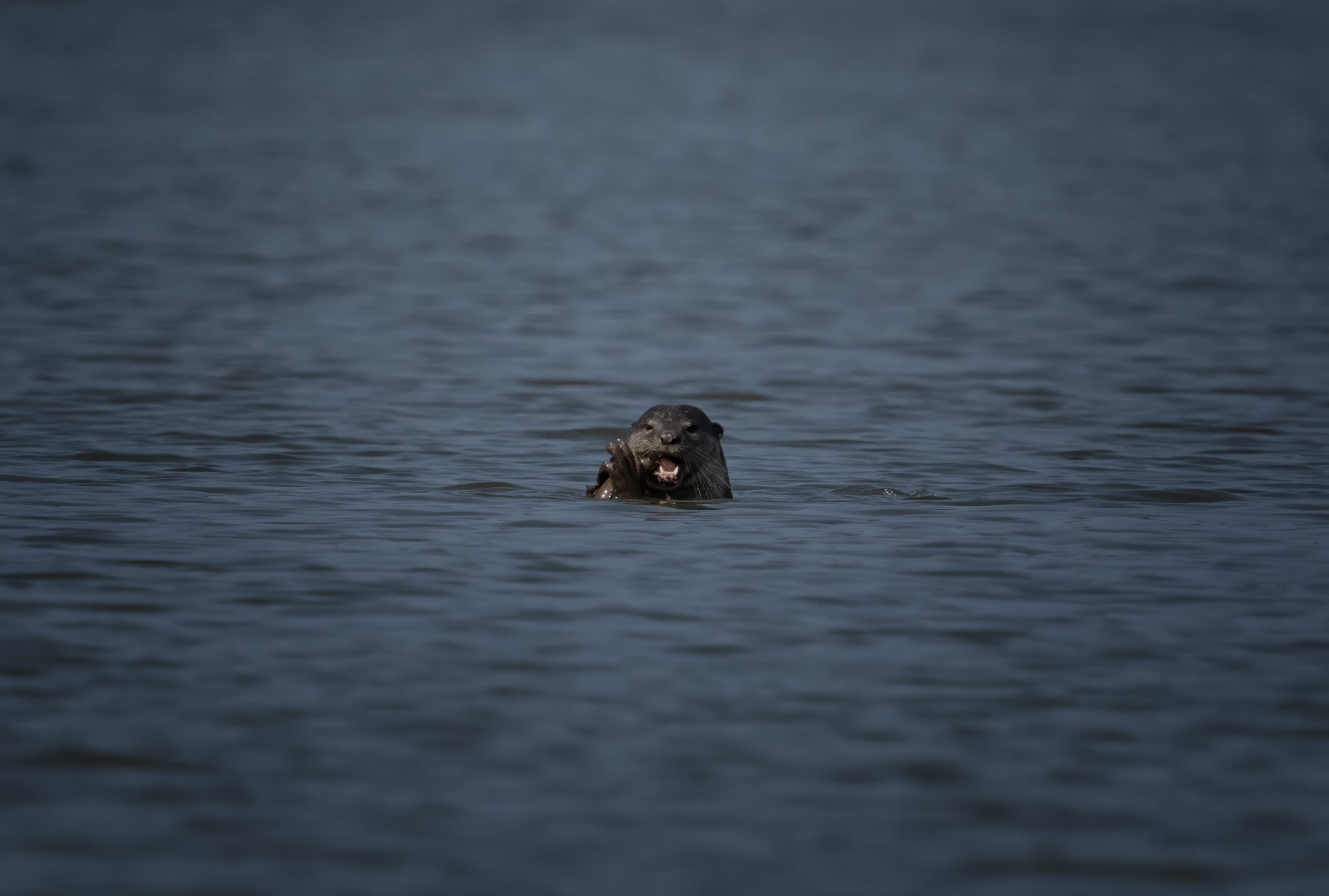
As a nature enthusiast and wildlife photographer, I believe stories like these can foster deeper respect and urgency for conservation. Every sighting, every photo, is a chapter in a much larger narrative – one of survival, coexistence, and stewardship.
Let us protect what remains, and celebrate what still thrives.
